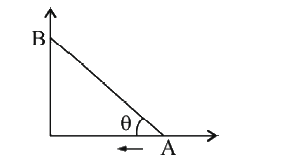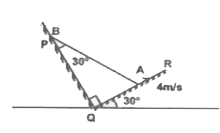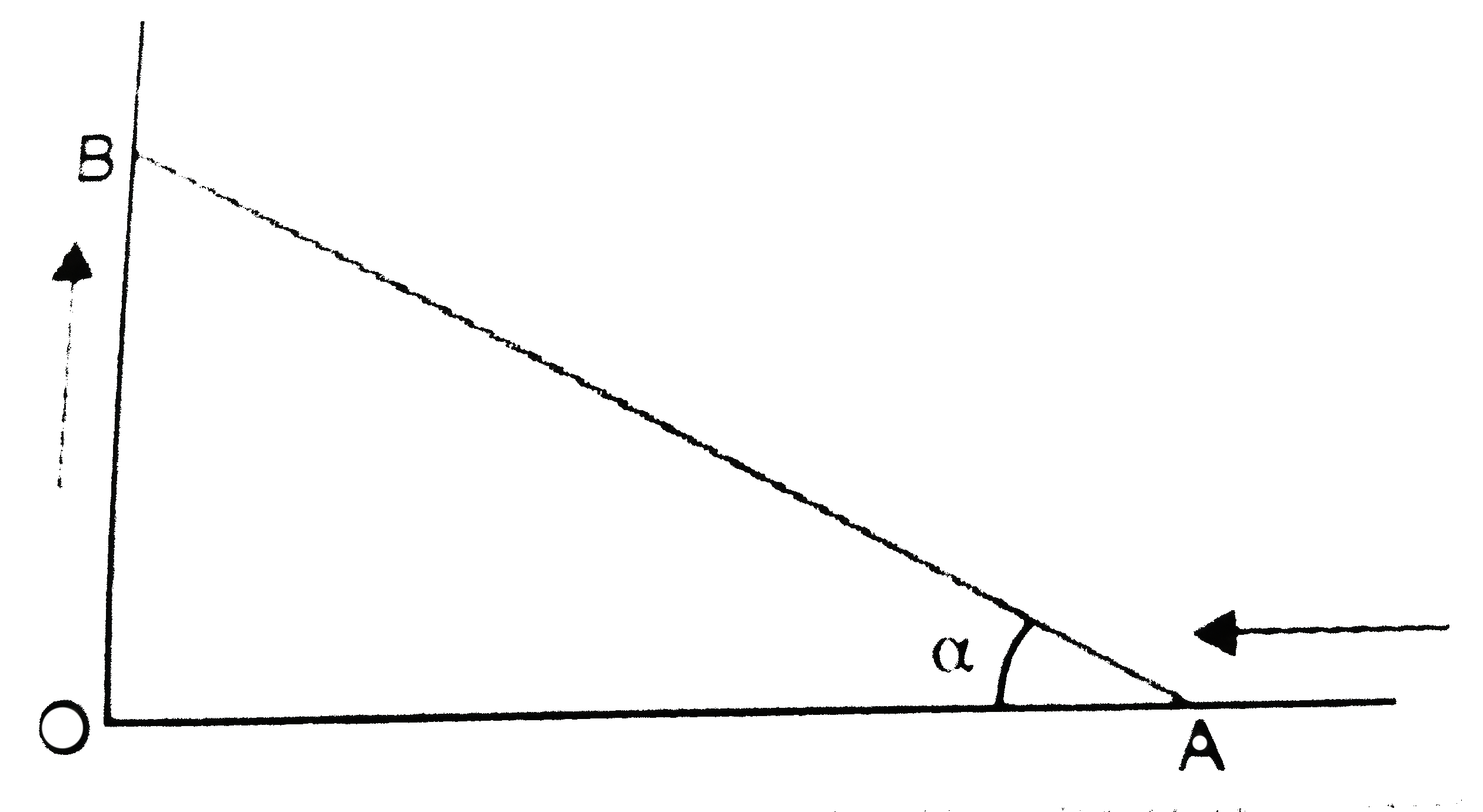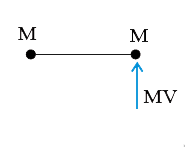Two particles A and B are connected by a rigid rod AB. The rod slides along perpendicular rails as shown here. The velocity of A to the left is 10 m/s. What is the velocity of B when angle ?

9.8m/s
10m/s
5.8m/s
17.3m/s
The correct Answer is:D
Here, the particle B moves upwards. Let the upwards velocity of B be v then
Topper's Solved these Questions
- BOOK - DISHA PUBLICATIONCHAPTER - MOTION IN A STRAIGHT LINEEXERCISE - Exercise-230videos
MOTION IN A STRAIGHT LINE
- BOOK - DISHA PUBLICATIONCHAPTER - MOTION IN A STRAIGHT LINEEXERCISE - Exercise-230videos
MOTION IN A STRAIGHT LINE
- BOOK - DISHA PUBLICATIONCHAPTER - MOTION IN A PLANE EXERCISE - Exercise -2 : CONCEPT APPLICATOR28videos
MOTION IN A PLANE
- BOOK - DISHA PUBLICATIONCHAPTER - MOVING CHARGES AND MAGNETISM EXERCISE - EXERCISE - 2 : Concept Applicator25videos
MOVING CHARGES AND MAGNETISM
Similar Questions
Two particles A and B connected by a rigid rod AB. The rod slides along two perpendicular rails as shown. The velocity of A to the left is 10 m/s. What is the velocity of B, when angle θ is 37∘ ?
 View Solution
View SolutionA rod of length L is sliding on a frictionless surface as shown in the figure. Velocity of end A is 4m/s along the wall. Find the velocity of end B, when end B makes 30∘ with wall PQ.
 View Solution
View Solution
Knowledge Check
- Question 1 - Select One
Two particles (A) and (B) are connected by a rigid rod AB. The rod slides along perpendicular rails as shown here. The velocity of (A) to the left is 10m/s.
What is the velocity of (B) ange α=30∘.
 .A(a) 9.8m/sB(b) 10m/sC( 5.8 m//sD( 17.3m/s
.A(a) 9.8m/sB(b) 10m/sC( 5.8 m//sD( 17.3m/s - Question 2 - Select One
Two particles A and B connected by a rigid rod AB. The rod slides along two perpendicular rails as shown. The velocity of A to the left is 10 m/s. What is the velocity of B, when angle θ is 37∘ ?
 A5.8m/sB9.8m/sC11.2m/sD13.3m/s
A5.8m/sB9.8m/sC11.2m/sD13.3m/s - Question 3 - Select One
A rod of length L is sliding on a frictionless surface as shown in the figure. Velocity of end A is 4m/s along the wall. Find the velocity of end B, when end B makes 30∘ with wall PQ.
 A8m/sB2√3m/sC4√3m/sD4√3m/s
A8m/sB2√3m/sC4√3m/sD4√3m/s
Two particles each of mass M are connected by a massless rod. The rod is lying on the smooth horizontal surface. If one of the particle is given an impulse MV as shown in the figure then angular velocity of the system would be:
 View Solution
View SolutionTwo particles each of mass M are connected by a massless rod. The rod is lying on the smooth horizontal surface. If one of the particle is given an impulse MV as shown in the figure then angular velocity of the system would be:
 View Solution
View SolutionTwo particles of equal mass m at A and B are connected by a rigid light rod AB lying on a smooth horizontal table. An impulse J is applied at A in the plane of the table and perpendicular at AB. Then the velocity of particle at A is :
View SolutionTwo particle of equal mass m at A and B are connected by a rigid light rod AB lying on a smooth horizontal table. An impulse J is applied at A in the plane of the table and perpendicular at AB. The velocity of particle at A is
View SolutionTwo particles connected by a rigid light rod AB, lying on a smooth horizontal table. An impulse J is applied at A in the plane of thetable and perpendicular at AB. Then the velocity of particle at A is
View Solution

